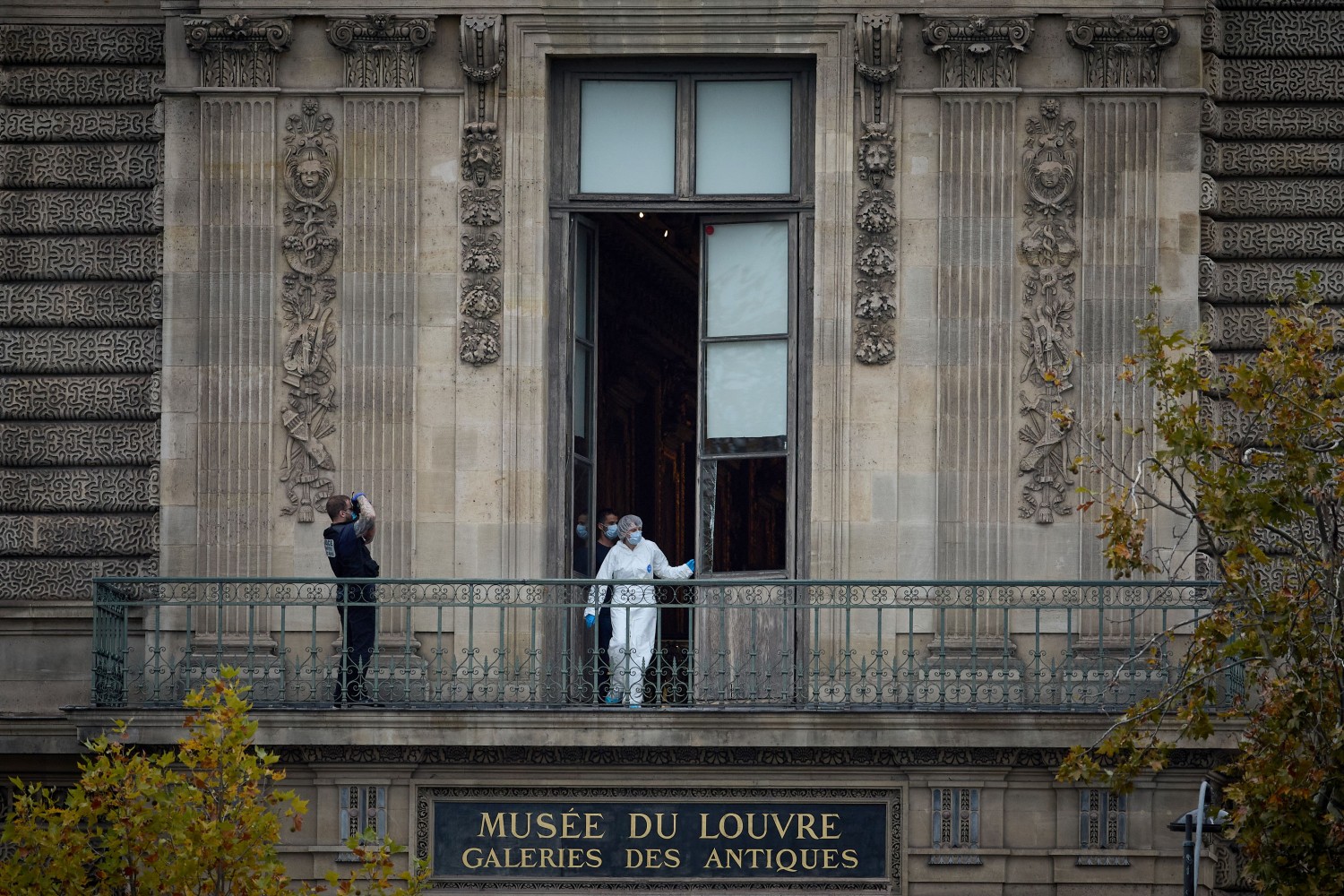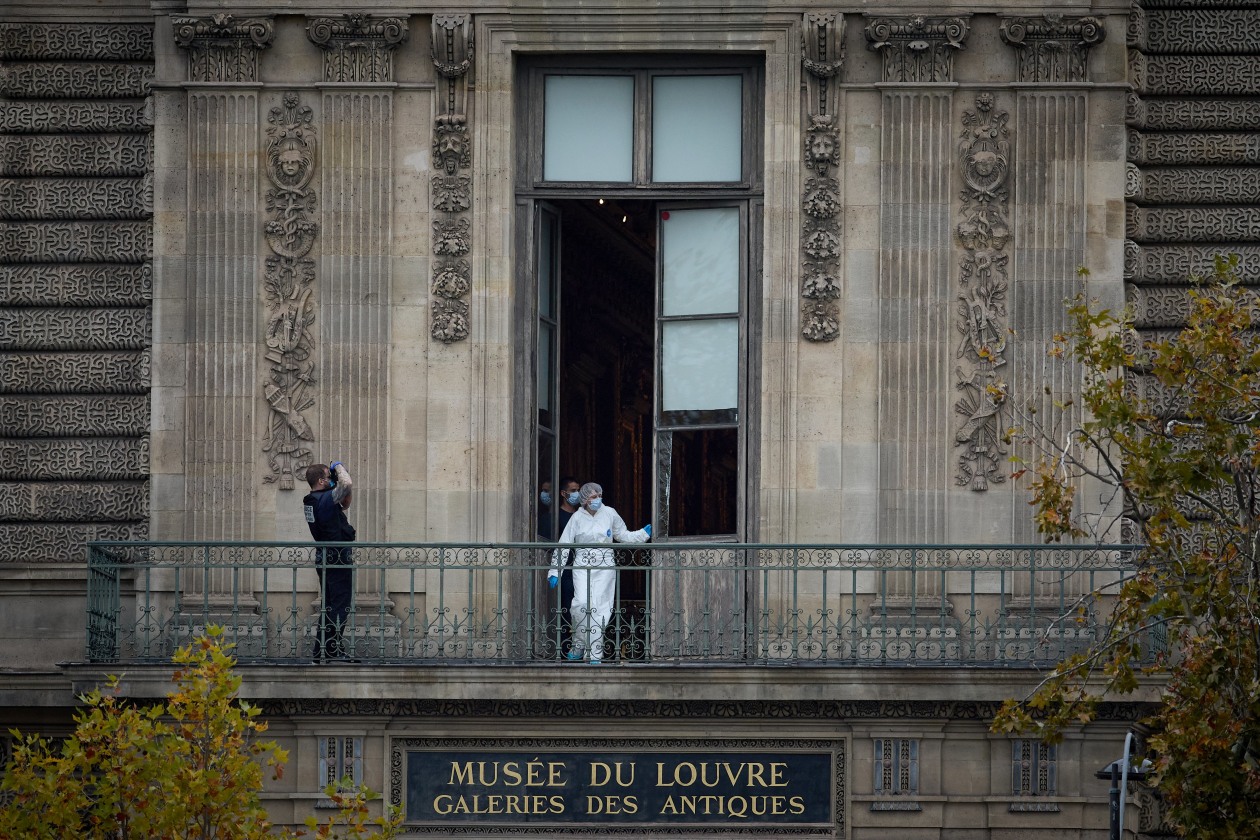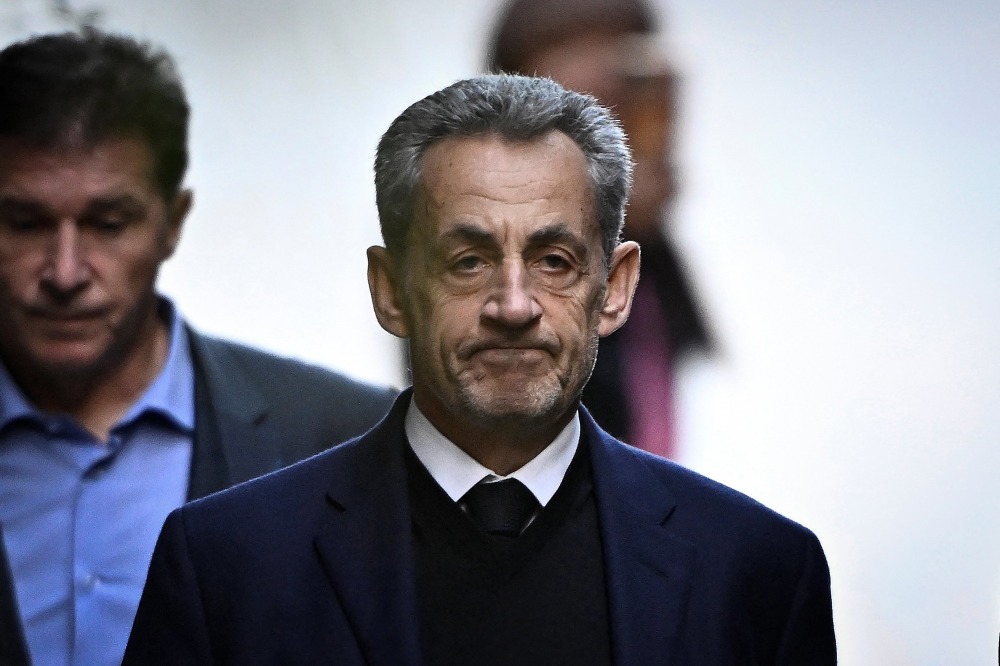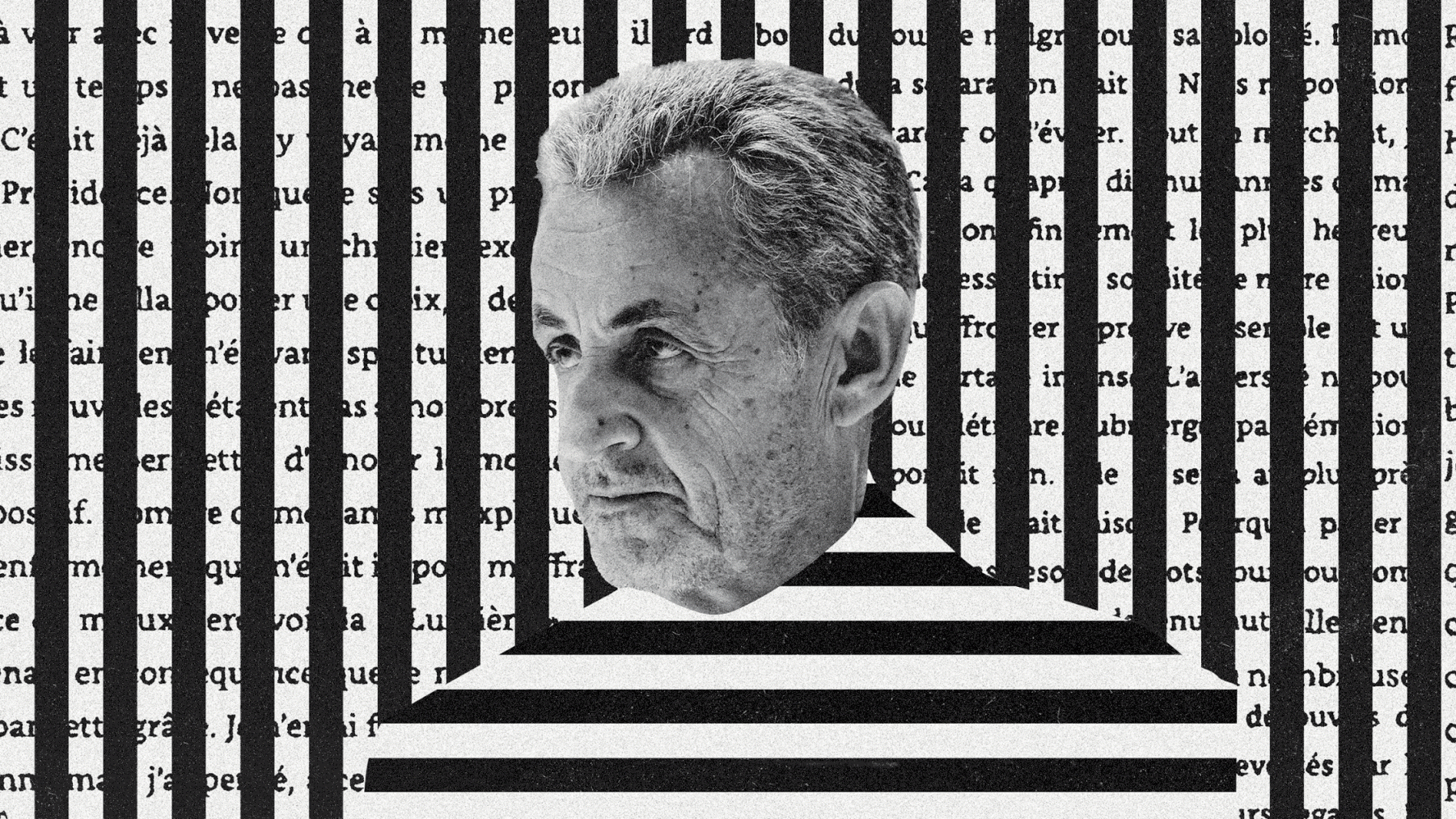
This article is more than
6 year oldFrance’s president addresses nation over Notre Dame fire: ‘It’ll be even more beautiful’
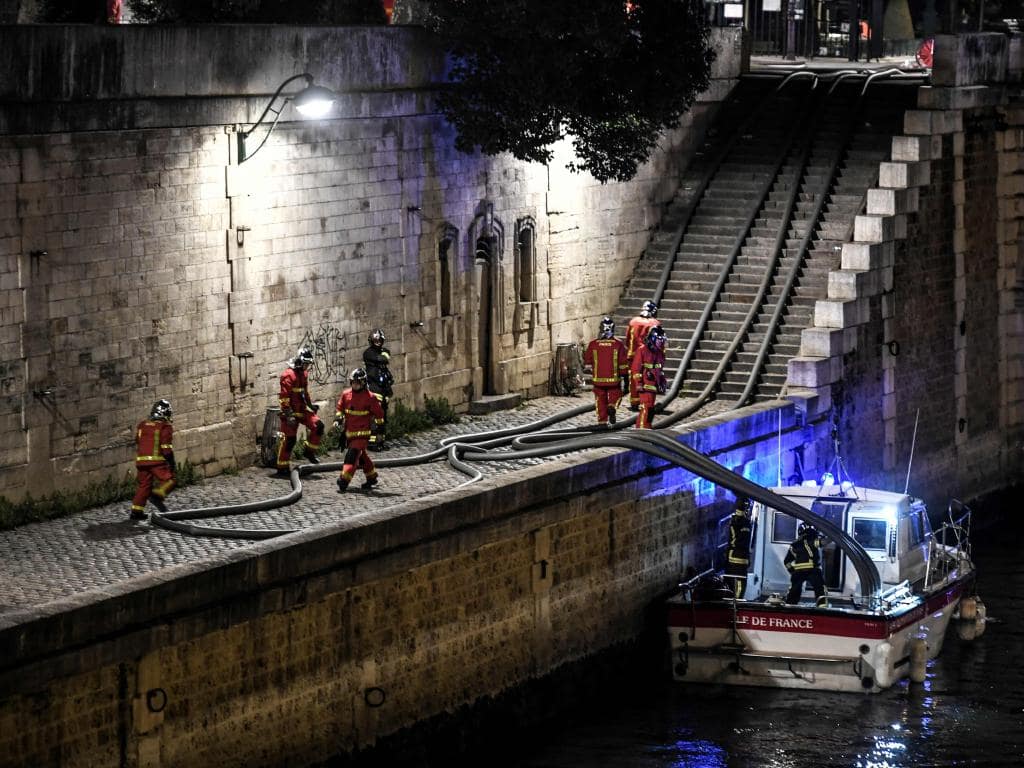
Staff at Notre Dame Cathedral took 23 minutes to find the raging inferno that destroyed the iconic landmark, it has emerged.
Paris prosecutor Remy Heitz said workers were not immediately able to find the rampaging fire after an alarm sounded at 6.20pm yesterday.
It was only until a second alert sounded at 6.43pm that the catastrophic blaze was discovered on the Gothic roof.

As the flames were finally extinguished after eight hours of destruction, prosecutors in Paris began a criminal investigation into the cause of the raging inferno.
Mr Heitz said the fire at the 850-year-old cathedral was likely to have been the result of an accident and there was no sign it was started deliberately.
“We are favouring the theory of an accident,” he said, adding 50 people were working on a “long” and “complex” probe into what caused the blaze.
He said they would be interviewing workers from five companies who had been hired to work on renovations to the cathedral’s roof, which was where the fire is thought to have started.
After the blaze was finally brought under control, many on Twitter turned their anger towards those responsible for the disaster.
“This is unacceptable, one of the most historic cathedrals in human history burning to the ground, a landmark, an icon,” wrote one user.
“I can only hope that the immolation was natural because if it is found that the blaze was caused by some idiot it’ll be disgusting beyond belief.”
Another added: “This is unacceptable. Whoever caused this deserves to rot.”

Others though appeared to have some sympathy for those responsible.
“In case it truly was an accident that caused the fire, we should pray for the person who made the mistake that started it all,” read one post.
“Can you imagine being the guy who accidentally burned down Notre Dame and how horrific that would be? He’s going to need prayers. Lots of them.”
The police probe is focused on Le Bras Freres (Le Bras Brothers), a company based in Jarny, in the Meurthe-et-Moselle department of northeastern France.
Some of its 200 specialist employees were working on the wooden and lead spire of Notre Dame Cathedral that collapsed on Monday evening after the fire broke out on the roof at 6.45pm.
“Many of these restorers were interviewed overnight,” said a source close to the investigation that has been opened into “accidental destruction by fire”.
“The fear is that a small fire began in the rood where they were working, and quickly spread across the building.
“The irony is that the restorers had just begun working on the spire which collapsed along with much of the roof.”

INCREDIBLE IMAGES
The devastation of the fire has been revealed in a series of stunning new images.
Drone footage from above the Notre Dame Cathedral shows blackened debris in the aftermath of the inferno.
Two huge holes can be seen, one in the main building and another in the adjacent structure.





RESTORATION
Le Bras Freres is one of the most respected companies of its kind and last year finished a widespread restoration program of Reims Cathedral in eastern France.
It had won the contract to restore the Notre Dame spire that was designed by the architect Eugene Viollet-le-Duc and erected in 1859.
It has emerged Julien Le Bras, the boss of Le Bras Freres, boasted about his firm’s expertise in dealing with historic buildings.
In a video posted online when the 32-year-old Le Bras said: “We are proud of our work on historic buildings.
“We have the technical ability and the competence for his work. Our first thought is to protect the values of historical buildings, it’s in our DNA.”
However, after the fire he said the company had 12 workers involved in the refurbishment and none of them were on site at the time of the disaster.
They were due to be on site for up to four years along with Europe Scaffolding, another company which had just put 250 tons of scaffolding around Notre Dame, along with a lift that could move up and down the 91-metre spire.
On Tuesday morning Mr Le Bras said he had no initial comment on the inquiry.
It will focus on the equipment being used by the restorers in a medieval cathedral where light and power sources were limited.
In such circumstances, cables and wires have to be attached to dozens of generators, and hoisted high up on to the building.
Paris prosecutors have opened a preliminary investigation, and have not yet ruled out any theories for the start of the fire, which blazed from 6.50pm on Monday until 3am on Tuesday.
REBUILD IN FIVE YEARS
France’s President Emmanuel Macron has addressed the nation in a televised speech and vowed to make the cathedral of Notre Dame “even more beautiful”.
Mr Macron told viewers he shared the country’s sorrow and hope for the future and reiterated that the structure would be rebuilt.
“We will make the Cathedral of Notre Dame even more beautiful within five years. We can do this,” he said.

But according to head of the group of companies for the Restoration of Historic Monuments, Frédéric Létoffé, it will take between “10 to 15 years” to fully restore Notre Dame.
Speaking at a news conference in Paris on Tuesday, Mr Létoffé said the site would need to be secured before any restoration work could take place.
“This will require a lot of work since, beyond shoring and reinforcement, it will be necessary to build a scaffolding with an umbrella to be able to cover the entire roof that went missing, to ensure protection against weathering” he said.
Social media was full of French angst last night as people demanded those responsible were punished.
“I can only hope that the immolation was natural because if it is found that the blaze was caused by some idiot it’ll be disgusting beyond belief,” one user wrote.
Another was more sympathetic. “Can you imagine being the guy who accidentally burned down Notre Dame and how horrific that would be? He’s going to need prayers. Lots of them.
Devastated Parisians gathered on the banks of the Seine and wept, while dazed tourists looked on aghast as the fire took hold.
With the world reeling at the devastation of a landmark beloved across the globe, politicians and luxury goods billionaires pledged to donate to a fund to rebuild the 12th-century cathedral.
But precious architectural features of the building were reportedly burned beyond recovery in the devastating blaze.
Mr Macron previously warned the fire could continue burning for days, warning“the battle is not yet totally won”.
The 12th-century cathedral is home to incalculable works of art and is one of the world’s most famous tourist attractions. Many of its religious artefacts — including a crown of thorns believed to have been worn by Jesus Christ — are said to have been preserved by brave firefighters who risked their lives to recover them.
The cause of the blaze was not known, but the Paris fire brigade said the fire was “potentially linked” to a six million euro ($9.48 million) renovation project on the church’s spire, and its 250 tons of lead.
The Paris prosecutors’ office earlier ruled out arson and possible terror-related motives and said it was treating the fire as an accident.
NOTRE DAME BURNS: A TIMELINE

6.50 PM LOCAL TIME: This is when the fire at Notre Dame Cathedral is believed to have started, apparently originating in the roof. Within minutes, witnesses say, thick smoke and flames were leaping into the sky. A spokesman for the cathedral said those inside recognised the fire alarm, which went off almost immediately, because they had practised a fire drill just days before.
7.40 PM: Fire spreads to the tallest spire of the cathedral.
7.53 PM: As horrified onlookers watch on, the cathedral’s tallest spire collapses.
7.59 PM: French President Emmanuel Macron says he is rushing to the scene, cancelling a scheduled television appearance to discuss yellow vest protests.
8.07 PM: Large parts of the roof begin to collapse, alarming terrified witnesses gathered to watch the fire, according to Reuters.
8.25 PM: Authorities evacuate the Il de la Cite, the island in the river Seine where the burning cathedral is located.
11.10 PM: Firefighters are able to successfully save the two main towers, but reports emerge that one has been seriously injured as they battled the blaze.
11.42 PM: Mr Macron declares, “We will rebuild Notre Dame”, in a televised address, and says the “the worst has been avoided” but warns the fire could go on for “several days”.

12.00 AM: As midnight approaches, the 400 firefighters on the scene manage to get control over the destructive fire.
12:05 AM: Prosecutors’ initial investigations suggest the fire started accidentally, ruling out fears of arson or terror links.
4.00 AM: A spokesman for French firefighters announces the fire is under control but only partially extinguished.
CATHEDRAL’S MEDIEVAL INTERIOR ‘FOREST’ DESTROYED
Wooden latticework inside the 12th-century cathedral is said to have been fuel for the destructive fire. A spokesman for Notre Dame told reporters on the ground the flames were consuming the historic woodwork, which dates back hundreds of years and has a rich history.
The wooden framework is primarily oak and dates back to the original framework first built for the cathedral. The trees used for Notre Dame’s frame were cut between 1160 and 1170, and make up the oldest parts of the structure.
The beams used were old growth — about 300-400 years old — so they were tall enough for the buildings high, vaulted ceilings.
The framework in place at the time of the fire dated back to the year 1220, according to the Notre Dame website. The internal “forest” structure was so named “because of the large number of beams that had to be used to set it up, each beam coming from a different tree”, which was harvested from a nearby wooded area.
It’s estimated the workers felled 13,000 trees to make up the internal latticework, with the strong oak beams holding up a roof of heavy lead tiles. The site notes that the original internal forest of woodwork in the choir section has been replaced, suggesting it may have previously been destroyed by a fire.


A French cultural heritage expert says France no longer has trees big enough to replace the beams.
Bertrand de Feydeau, vice president of preservation group Foundation du Patrimoine, told France Info radio the wooden roof was built with beams more than 800 years ago from primal forests.
He said the cathedral’s roof could not be rebuilt exactly as it was before the fire because “we don’t, at the moment, have trees on our territory of the size that were cut in the 13th century.” He said the restoration work would have to use new technologies to rebuild the roof.

The cathedral is home to countless other priceless artefacts of significance to Catholics, other Christians and lovers of art.
The Rose Windows are immense and elaborate stained glass, overlooking the three main wings of the cathedral. Dating back to the 13th century, the windows are reported to have survived the fire.


A series of 76 four-metre tall paintings depict the New Testament’s Acts of the Apostles, including the crucifixion of St. Peter and the conversion of St Paul. These paintings date from 1630 to 1707 and were created by members of the Royal Academy of Painting and Sculpture.
Other treasured artefacts inside include what is believed to be the crown of thorns worn by Jesus Christ, a fragment of the True Cross and one of the Holy Nails.
Local firefighters formed a “human chain” to save these relics, entering the Gothic building to rescue treasures including the crown of thorns and the tunic of Saint Louis.
Catholics believe the sacred thorns were worn by Jesus while he was crucified.
COULD FIREFIGHTERS HAVE DONE MORE?
Is there anything firefighters could have done to control the blaze that tore through Paris’ historic cathedral sooner?
Experts say the combination of an 850-year-old structure, heavy timber, soaring open spaces and a lack of sophisticated fire-protection systems left firefighters with devastatingly few options once the flames got out of control.
“Very often, when you’re confronted with something like this, there’s not much you can do,” said Glenn Corbett, a professor of fire science at John Jay College.
Fire hoses looked overmatched — more like gardening equipment than firefighting apparatuses — as flames raged across the cathedral’s wooden roof and burned bright orange for hours. The fire toppled a 91-metre spire and launched baseball-sized embers into the air.
While the cause remains under investigation, authorities said the cathedral’s structure — including its landmark rectangular towers — had been saved.


Some factors that made Notre Dame a must-see for visitors to Paris — its age, sweeping size and French Gothic design featuring masonry walls and tree trunk-sized wooden beams — also made it a tinderbox and a difficult place to fight a fire, said US Fire Administrator Keith Bryant.
With a building like that, it’s nearly impossible for firefighters to attack a fire from within. Instead, they have to be more defensive “and try to control the fire from the exterior,” said Mr Bryant, a former Oklahoma fire chief and past president of the International Association of Fire Chiefs.
“When a fire gets that well-involved, it’s very difficult to put enough water on it to cool it, to bring it under control,” Mr Bryant said.
And while there’s a lot of water right next door at the Seine River, getting it to the right place is the problem, he said. “There are just not enough resources in terms of fire apparatuses, hoses to get that much water on a fire that’s that large.”
Paris’s narrow streets make it difficult to manoeuvre large ladder fire trucks, so European fire departments don’t tend to have ladders as big as those in the United States, he said.
Other landmark houses of worship have taken steps in recent years to reduce the risk of a fire.
St Patrick’s Cathedral in New York City, built in 1878, installed a sprinkler-like system during recent renovations and coated its wooden roof with fire retardant. The cathedral also has at least four fire inspections a year.
Washington National Cathedral — built in 1912 with steel, brick and limestone materials that put it at less risk of a fast-moving fire — is installing sprinklers as part of a renovation spurred by damage from a 2011 earthquake. It holds fire inspections every two years, but DC firefighters visit more often to learn about the church’s unique architecture and lingo — so they’ll know where to go if there’s a fire in the nave, or main area of the church, for instance.
“It’s really important for us to make sure that those local firefighters are aware of our building and our kooky medieval names that we use for all the different spaces and that they know where to go,” said Jim Shepherd, the cathedral’s director of preservation and facilities.
Cardinal Timothy Dolan, the New York Archbishop who often visited Notre Dame while studying in Europe, saw significance in the fact that the fire broke out at the beginning of Holy Week, when Christians there and around the world prepare to celebrate Easter and the resurrection of Jesus Christ.
“Just as the cross didn’t have the last word, neither — for people of faith in France — will this fire have the last word,” he said.
— with AFP

